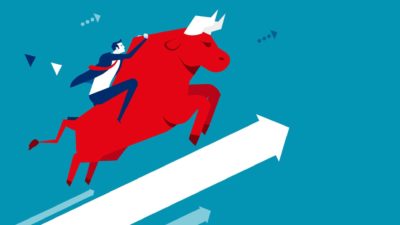There are a large group of investors (and would-be investors) on the ASX who are just looking for a bottom-drawer investment.
There are many Australians who understand the wonders that ASX shares can unlock in terms of building wealth over time. But far fewer of those Australians actually want to follow in the path of Warren Buffett and become individual stock pickers.
After all, building your own share portfolio takes a lot of time, and research. It involves reading annual reports and sifting through income statements, looking at a company's revenue, earnings and profits. Not to mention building up a high tolerance for the wild emotions that investing can elicit. It's not for everyone, that's for sure.
What is a passive investment stock?
This is where a bottom-drawer investment can come in handy. A bottom-drawer investment is one that requires little ongoing maintenance, you can put your money in it, and just 'set and forget' not having to worry about financial statements, pricing, valuation and when to buy or sell.
One popular option that fills this role is the Vanguard Australian Shares Index ETF (ASX: VAS). This exchange-traded fund (ETF) is the most popular of its kind on the share market. The VAS ETF works by holding the largest 300 companies on the ASX, weighted by market capitalisation (size).
So it is a single investment that represents a stake in 300 different ASX companies. That includes everything from BHP Group Ltd (ASX: BHP) and Telstra Group Ltd (ASX: TLS) to Commonwealth Bank of Australia (ASX: CBA) and JB Hi-Fi Ltd (ASX: JBH).
For this reason, it is a great bottom-drawer investment. You can set it and forget it, safe in the knowledge that you will always have a stake in the ASX's 300 largest shares, whatever they may be (the ETF is 'rebalanced' every quarter to ensure that it only holds the largest 300 companies).
But is this the best option for passive investors on the ASX?
Is the Vanguard Australian Shares ETF the best passive investment on the ASX?
Well, let's get into the numbers. So the VAS ETF, as of 31 May, has averaged a return of 8.02% per annum over the past ten years, including reinvestment of dividends. Over the past five years, it's 7.42% per annum, and 11.35% per annum over the past three.
Not bad for a bottom-drawer investment.
But let's see how it compares to some other passive investing options.
Another popular passive investment on the ASX is ASX 200 ETFs. These funds are more common than ASX 300 funds like VAS but offer less diversification since you are only getting exposure to 200 shares, rather than 300. ASX 200 ETFs have delivered similar returns over the past decade.
One prominent ASX 200 fund is the iShares Core S&P/ASX 200 ETF (ASX: IOZ). As of 31 May, this ETF had returned an average of 7.92% per annum over the past ten years.
Another option for hands-off investors to consider is listed investment companies (LICs). These function in a similar fashion to the index funds listed above, but have actively managed portfolios instead of index-tracking ones. They are also structured as a company, not a trust.
One of the most popular LICs out there is Argo Investments Ltd (ASX: ARG). Argo specialises in conservative investing through a portfolio of ASX blue-chip shares. According to this LIC, Argo has given its investors a total shareholder return (share price growth plus dividends) of 6.9% per annum over the past decade.
So it seems that the Vanguard Australian Shares ETF is indeed a top option for passive income investors to consider today, having given shareholders one of the best returns over the past ten years compared to other bottom-drawer investments. But remember, past performance is no guarantee of future returns.









